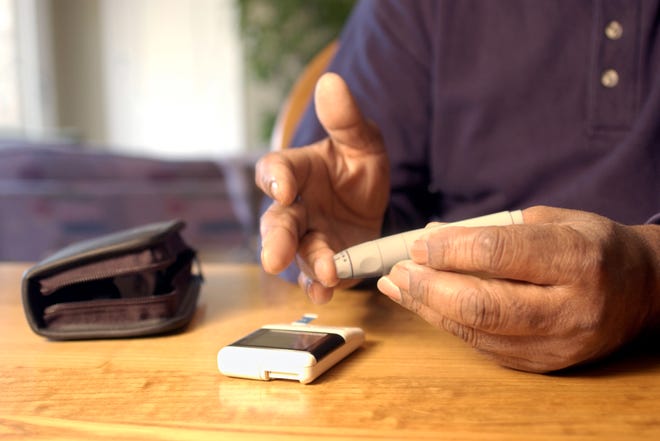
With Medicare annual open enrollment about to close on Dec. 7, Medicare experts are discovering many insurance plans are dropping some insulin coverage in 2024.
In an informal survey of 22 Medicare plans, 10 plans are dropping at least one insulin from their formulary, according to Diane Omdahl, founder of 65 Inc., which provides Medicare enrollment guidance through fee-for-service, one-on-one consultations. Four plans are dropping four or more different insulins, she said.
If you’re banking on the $35 out-of-pocket insulin cap to continue saving money next year, you must check your plan to see if your insulin is still covered. Only if your drug plan covers your insulin will you receive the $35 cap, according to the Centers for Medicare & Medicaid Services.
“Plans have the option not to cover drugs, and that’s what’s happening,” Omdahl said. “It’s going to be tough” for people if they discover later their insulin isn’t covered and capped.
Why are insurance plans dropping insulin coverage?
It could be related to the Biden administration’s changes to Medicare coverage, experts say.
Because of the insulin cap, “we’re seeing some insurance companies responding to this change by adjusting the medications they will cover,” said Dr. Karla Robinson, medical editor at drug price comparison site GoodRx. “Some plans are choosing not to cover those insulins that come with a higher manufacturing cost or are facing production challenges.”
In addition to the insulin cap, cost-sharing will be eliminated next year once enrollees reach the catastrophic coverage level, or when out-of-pocket spending reaches $8,000. In 2023, beneficiaries paid 5% coinsurance or copays in some instances at the catastrophic level.
In 2025, out-of-pocket drug spending will be capped at $2,000.
While Medicare enrollees will save thousands, insurance companies will pay more and likely look for new ways to pass on costs and generate more revenue, experts say.
If these aren’t the reasons, “it’s a very strong correlation,” Omdahl said.
What should people do?
People need to check their Medicare plans now to see if their insulin is covered, Omdahl said. If it isn’t, they need to speak to their doctors to find an alternative that might be covered by their plan or enroll in a different plan.
And they must do all of this by Dec. 7, the last day of Medicare annual enrollment.
“If you have (Medicare) Part D, you’ll be stuck for a year,” Omdahl said. “Your opportunity closes Dec. 7.”
Medicare Advantage enrollees, though, can still change their plans during the Medicare Advantage open enrollment period from Jan. 1 – March 31.
People should start at Medicare.gov, input every drug they take, and see if their plan will cover their drugs next year. They can also look at other plans they’re eligible for. Then they can compare coverage and prices before enrolling in a plan.
With the deadline so close, experts recommend avoiding calling Medicare if possible because you could be on hold for hours.
If you need help, try contacting State Health Insurance Assistance Programs or some Medicare brokers vetted by the National Council on Aging, an advocate for older adults.
How good is your financial adviser?Help USA TODAY rank the top firms
Tackling insulin woes:More than 800 U.S. counties are ‘insulin deserts.’ How these senators want to help Americans with diabetes
Special alert for Levemir insulin users
If you use Levemir, you should know maker Novo Nordisk said it’s discontinuing this insulin in 2024. Shortages could begin as early as January, Omdahl said, so you should start looking for an alternative that their insurance plan covers.

How much would insulin cost if you’re not covered?
It could cost hundreds of dollars more annually and be “catastrophic” for over a million Americans, a Yale study published last year said.
Among Americans who use insulin, 14.1% reached catastrophic spending over one year, it said, defining catastrophic as more than 40% of income spent on insulin after paying for food and housing.
Nearly two-thirds of patients who experienced that level of insulin spending were Medicare beneficiaries, the study said.
If you happen to get stuck with a plan that doesn’t cover your insulin, you still may have options.
You can talk with your doctor to see if another type of insulin that is covered would work for you instead.
“You can also check for patient assistance programs or other discounts,” said Robinson of GoodRx.
For example, GoodRx can help you find savings on diabetes medications including insulin, she said. Through a partnership with Sanofi, eligible patients can use GoodRx to access a $35 coupon for a 30-day supply of Lantus, redeemable at 70,000 retail pharmacies, she said.
How many Americans on Medicare take insulin?
The number of Medicare Part D enrollees using insulin totaled 3.3 million beneficiaries in 2020, according to nonprofit health care researcher KFF.
Medora Lee is a money, markets, and personal finance reporter at USA TODAY. You can reach her at [email protected] and subscribe to our free Daily Money newsletter for personal finance tips and business news every Monday through Friday.






